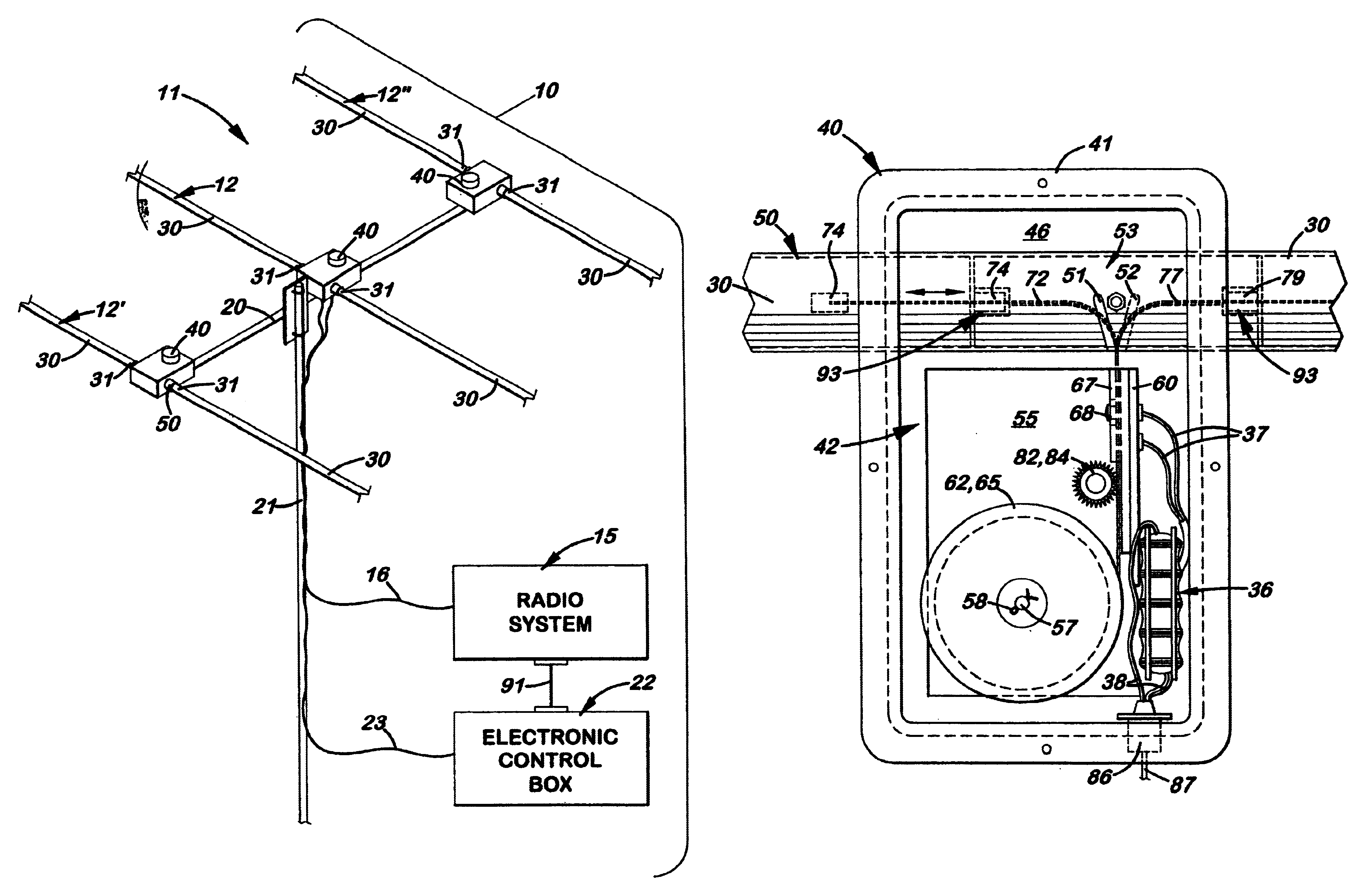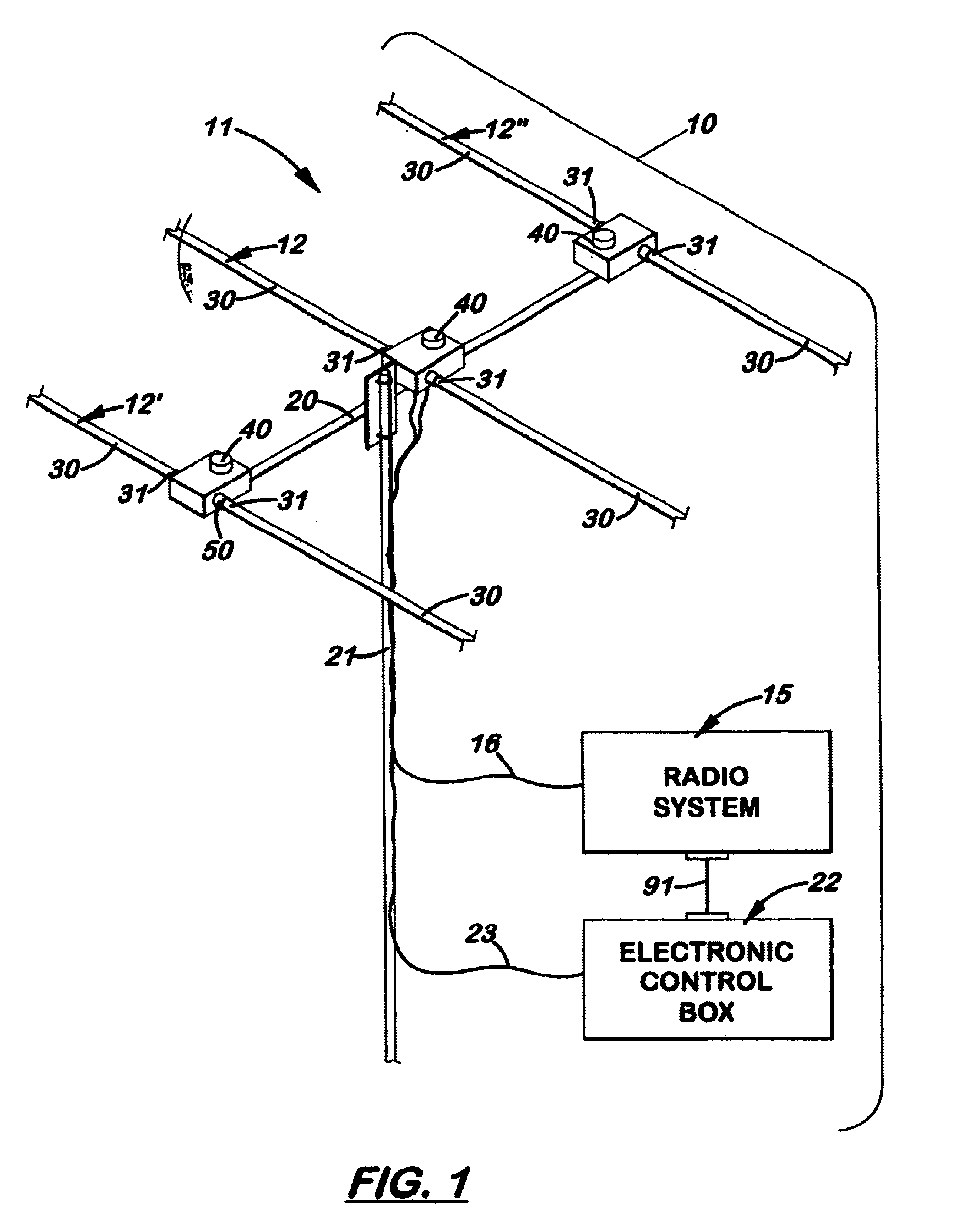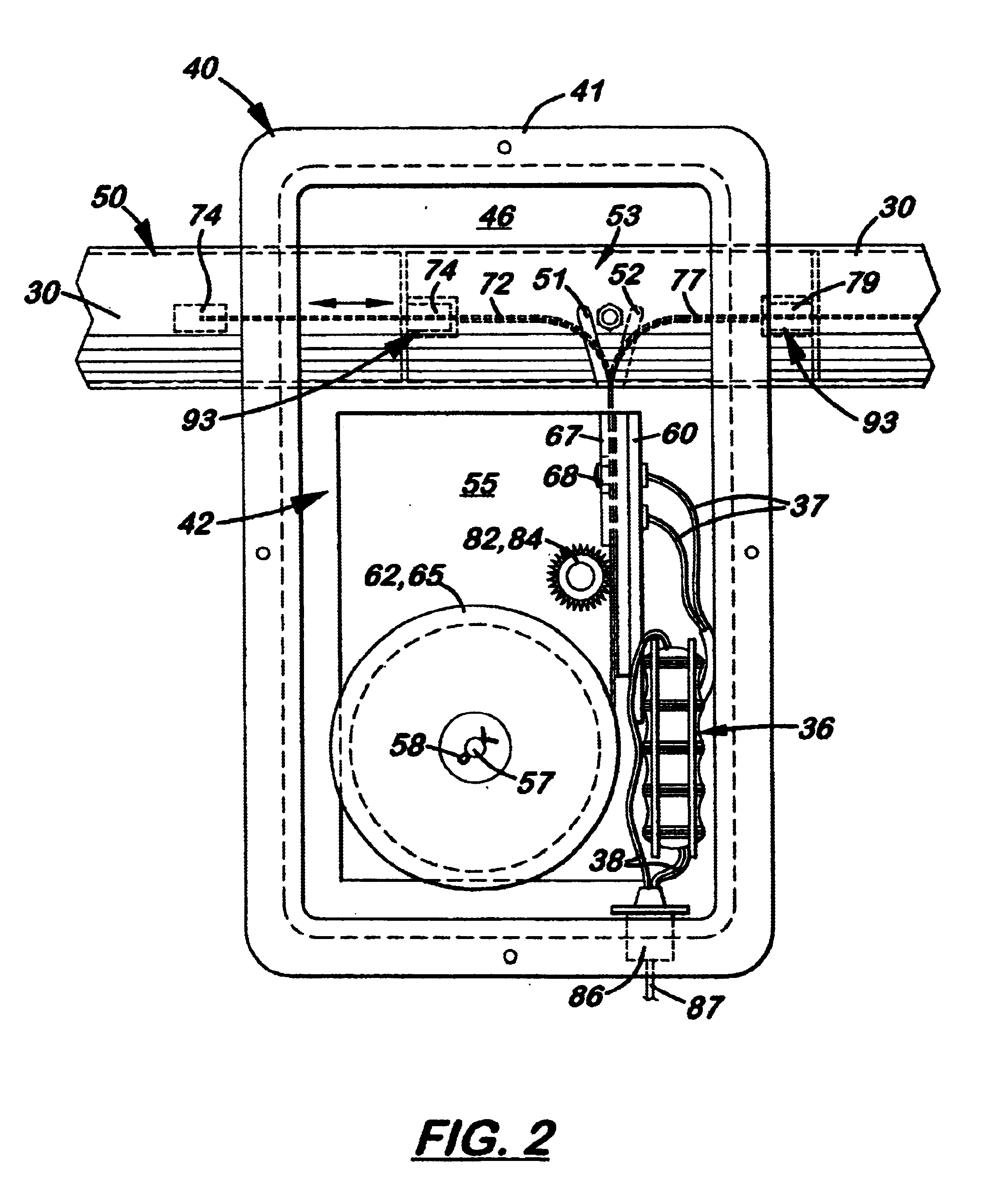Tunable antenna system
a technology of antenna system and antenna array, which is applied in the field of radio antennas, can solve the problems of inability to optimally tune, large and complex array of antenna designs, and inability to achieve wide frequency coverag
- Summary
- Abstract
- Description
- Claims
- Application Information
AI Technical Summary
Benefits of technology
Problems solved by technology
Method used
Image
Examples
first embodiment
FIG. 8 is a block diagram of the antenna system 10. The motherboard 27 with programmable logic array 28, under the direction of the software program 29, controls the operation of all three elements 12, 12', 12" simultaneously via stepper motor drivers 83, 83', 83", respectively. The display 24 indicates various operating parameters such as current frequency, mode, warning messages, setup data for RS-232 communications, antenna creation data, and calibration data. The keyboard / LED component 26 allows the human operator to change bands, change modes, create and save antennas, and perform calibrations. The keyboard / LED peripheral component 26 provides indications of various functions such as band indication, mode selection, and sundry functions. The software program 29 either calculates the required lengths of antenna elements 12, 12', 12" from formulas or uses lookup tables depending on the mode of operation. The user can also customize the antenna 11 to satisfy specific requirements ...
second embodiment
In a second embodiment, shown in FIG. 6, the support arms 30 are telescopically designed to adjust in length to the length of the conductive member 72, 77. In the preferred embodiment, there are four 4-foot sections 32-35, each slightly smaller than the other so that the sections 32-35 may be longitudinally aligned and telescopically adjusted in length. Attached to the distal end of the last section 35 is a non-conductive cap 39 that attaches to the distal end of the conductive member 72 (shown) or 77 (not shown). When the conductive member 72, 77 is moved inside the support arm 30, the sections 32-35 telescopically move so that the overall length of the support arm 30 is approximately equal to the length of the conductive member 72, 77.
During operation, the operator may use the electronic control unit 22 to perform some of the following functions:
1. Single button band selection includes the ability to scroll through the band in segments of approximately 100 kHz.
2. Continuous adjust...
PUM
 Login to View More
Login to View More Abstract
Description
Claims
Application Information
 Login to View More
Login to View More - R&D
- Intellectual Property
- Life Sciences
- Materials
- Tech Scout
- Unparalleled Data Quality
- Higher Quality Content
- 60% Fewer Hallucinations
Browse by: Latest US Patents, China's latest patents, Technical Efficacy Thesaurus, Application Domain, Technology Topic, Popular Technical Reports.
© 2025 PatSnap. All rights reserved.Legal|Privacy policy|Modern Slavery Act Transparency Statement|Sitemap|About US| Contact US: help@patsnap.com



